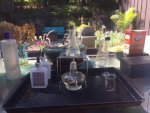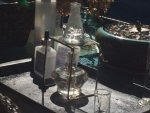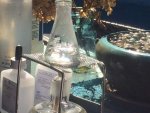Yeah, I may have to call them. I was hoping to just boil water today with acid to test 
I also need to find out if my trucked water had contained flouride or not. Obviously, my well doesn't, but even if I've added 60" this year (I likely have) I assume the flouride would just concentrate, since most of my water exchange is sponsored by evaporation, much moreso than by backwashing, which is rare.
At Nova's site, where the sell the taylor kit, K-1584, Taylor Drop Test Kit, Phosphonate, 1 drop = 0.8 ppm PBTC they say this:
I also need to find out if my trucked water had contained flouride or not. Obviously, my well doesn't, but even if I've added 60" this year (I likely have) I assume the flouride would just concentrate, since most of my water exchange is sponsored by evaporation, much moreso than by backwashing, which is rare.
At Nova's site, where the sell the taylor kit, K-1584, Taylor Drop Test Kit, Phosphonate, 1 drop = 0.8 ppm PBTC they say this:
K-1584 is a drop-count titration that employs chrome azurol S indicator instead of XO indicator. At the appropriate pH for the reaction, the addition of thorium nitrate titrating solution produces a distinct peach-to-purple color change at the endpoint. This test is appropriate for nonfluoridated process cooling waters that contain PBTC in the chemical treatment blend. Conversion factors also are provided for ATMP, Na5ATMP, HEDP, and HPA.
Note: Iron causes negative interference with the XO method, positive with the CAS method. With either method, orthophosphate and polyphosphate can cause positive interference; fluoride is an additional positive interference for the CAS method.





